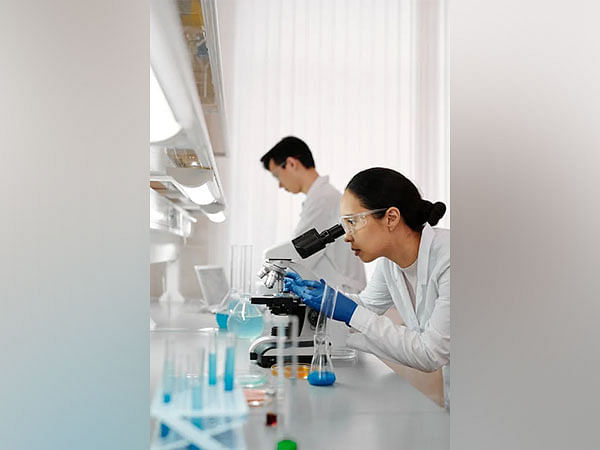Washington DC [US], October 21 (ANI): A group of researchers led by the University of California, San Diego, has created soft yet durable materials that glow in reaction to mechanical stress such as compression, stretching, or twisting. The materials get their luminescence from dinoflagellates, which are single-celled algae.
The work, inspired by the bioluminescent waves observed during red tide events at San Diego’s beaches, was published on October 20 in Science Advances.
“An exciting feature of these materials is their inherent simplicity–they need no electronics, no external power source,” said study senior author Shengqiang Cai, a professor of mechanical and aerospace engineering at the UC San Diego Jacobs School of Engineering. “We demonstrate how we can harness the power of nature to directly convert mechanical stimuli into light emission.”
This study was a multi-disciplinary collaboration involving engineers and materials scientists in Cai’s lab, marine biologist Michael Latz at UC San Diego’s Scripps Institution of Oceanography, and physics professor Maziyar Jalaal at University of Amsterdam.
The primary ingredients of the bioluminescent materials are dinoflagellates and a seaweed-based polymer called alginate. These elements were mixed to form a solution, which was then processed with a 3D printer to create a diverse array of shapes, such as grids, spirals, spiderwebs, balls, blocks and pyramid-like structures. The 3D-printed structures were then cured as a final step.
When the materials are subjected to compression, stretching or twisting, the dinoflagellates within them respond by emitting light. This response mimics what happens in the ocean, when dinoflagellates produce flashes of light as part of a predator defense strategy. In tests, the materials glowed when the researchers pressed on them and traced patterns on their surface. The materials were even sensitive enough to glow under the weight of a foam ball rolling on their surface.
The greater the applied stress, the brighter the glow. The researchers were able to quantify this behavior and developed a mathematical model that can predict the intensity of the glow based on the magnitude of the mechanical stress applied.
The researchers also demonstrated techniques to make these materials resilient in various experimental conditions. To reinforce the materials so that they can bear substantial mechanical loads, a second polymer, poly(ethylene glycol) diacrylate, was added to the original blend. Also, coating the materials with a stretchy rubber-like polymer called Ecoflex provided protection in acidic and basic solutions. With this protective layer, the materials could even be stored in seawater for up to five months without losing their form or bioluminescent properties.
Another beneficial feature of these materials is their minimal maintenance requirements. To keep working, the dinoflagellates within the materials need periodic cycles of light and darkness. During the light phase, they photosynthesize to produce food and energy, which are then used in the dark phase to emit light when mechanical stress is applied. This behavior mirrors the natural processes at play when the dinoflagellates cause bioluminescence in the ocean during red tide events.
“This current work demonstrates a simple method to combine living organisms with non-living components to fabricate novel materials that are self-sustaining and are sensitive to fundamental mechanical stimuli found in nature,” said study first author Chenghai Li, a mechanical and aerospace engineering Ph.D. candidate in Cai’s lab.
The researchers envision that these materials could potentially be used as mechanical sensors to gauge pressure, strain or stress. Other potential applications include soft robotics and biomedical devices that use light signals to perform treatment or controlled drug release.
However, there is much work to be done before these applications can be realized. The researchers are working on further improving and optimizing the materials. (ANI)
This report is auto-generated from ANI news service. ThePrint holds no responsibility for its content.



